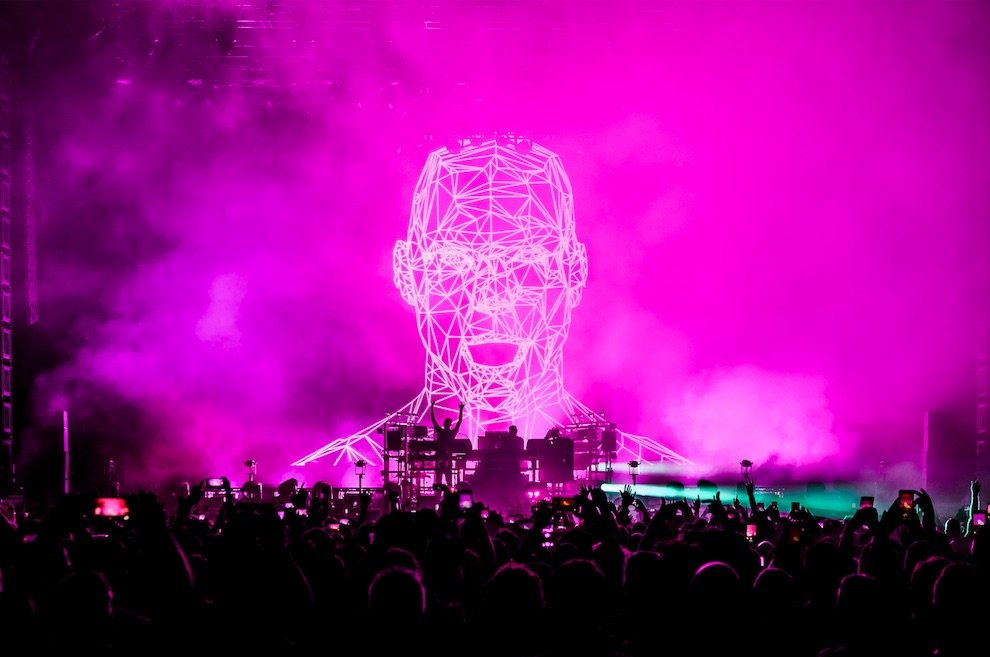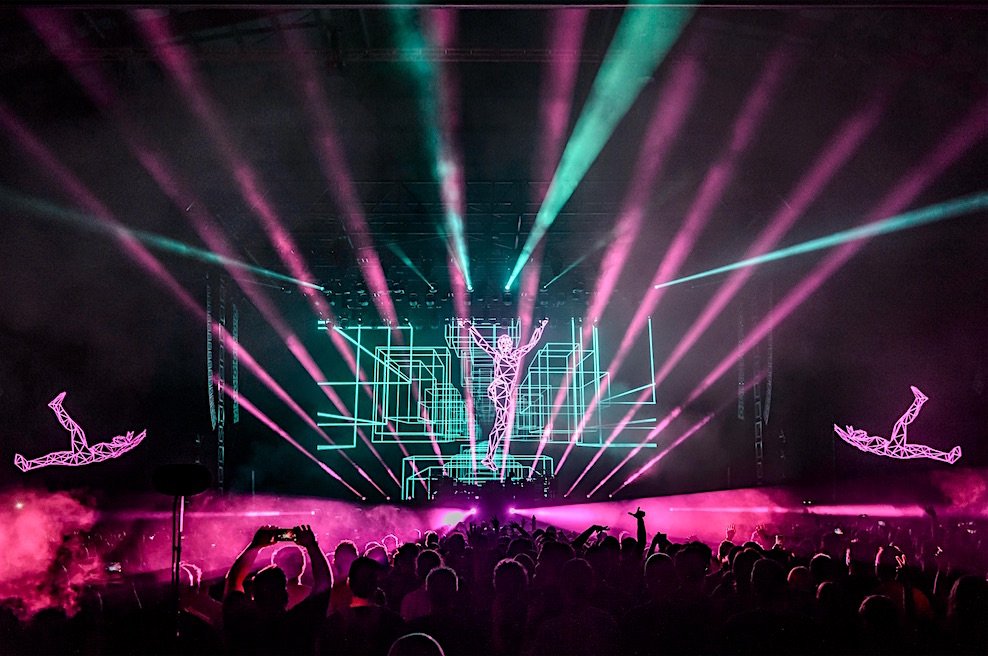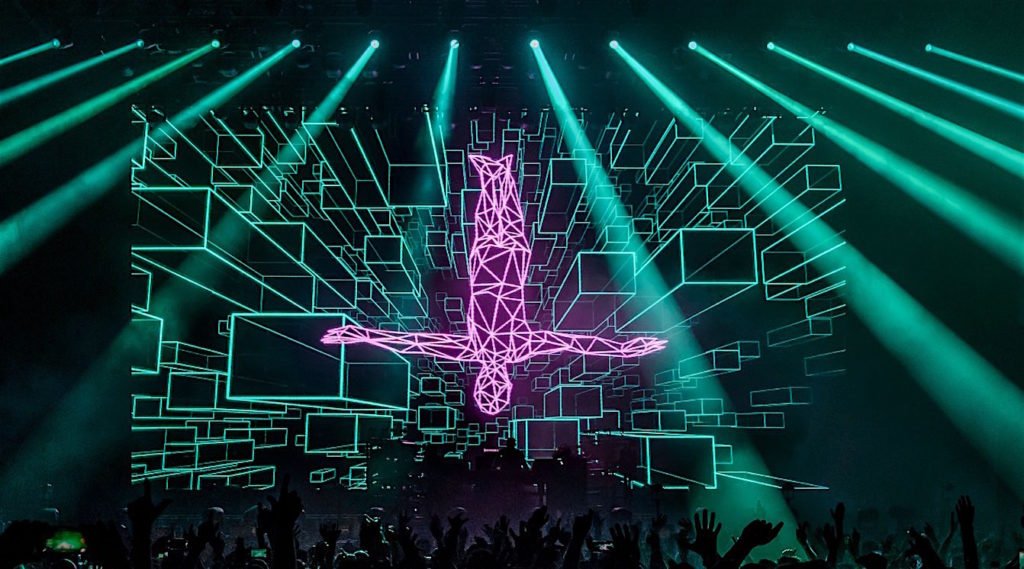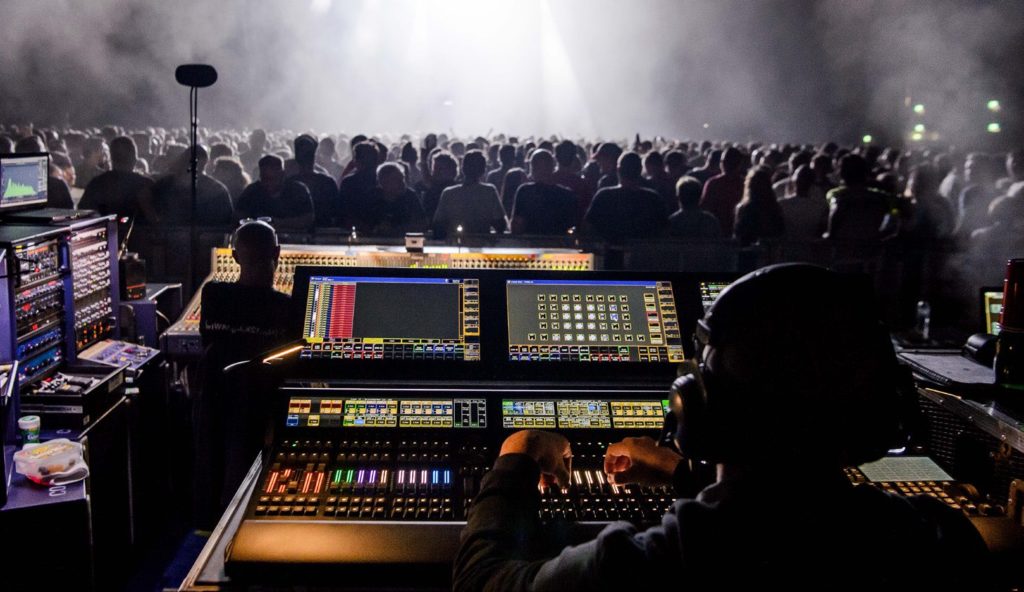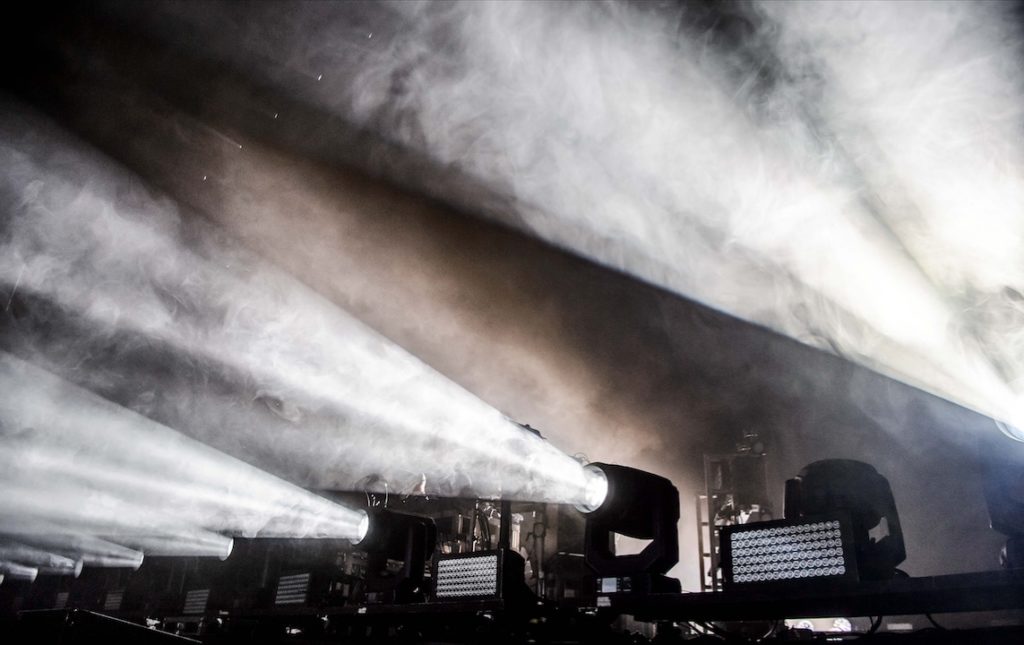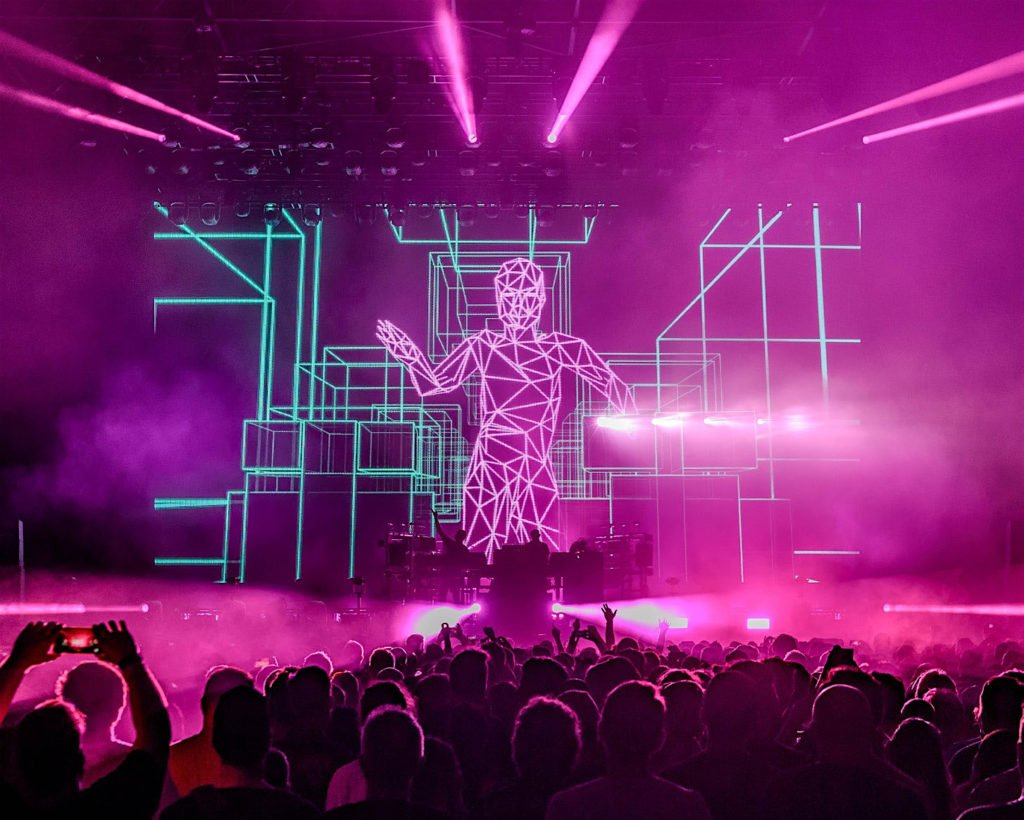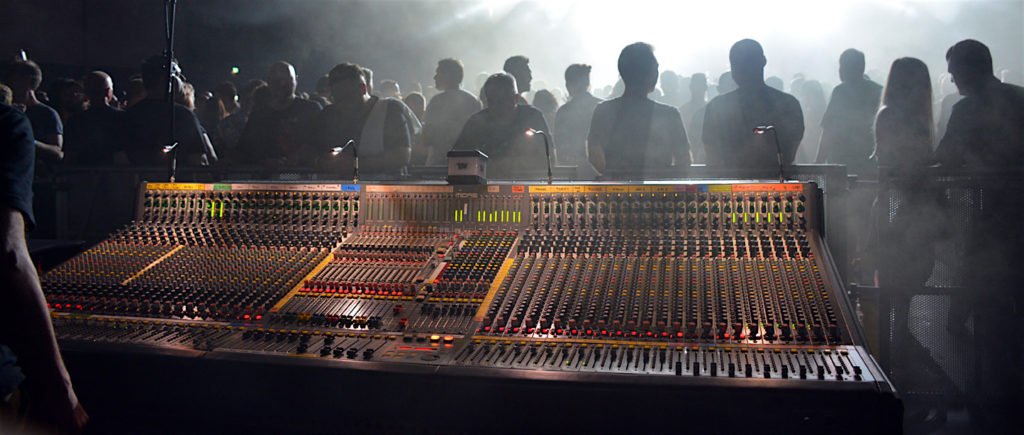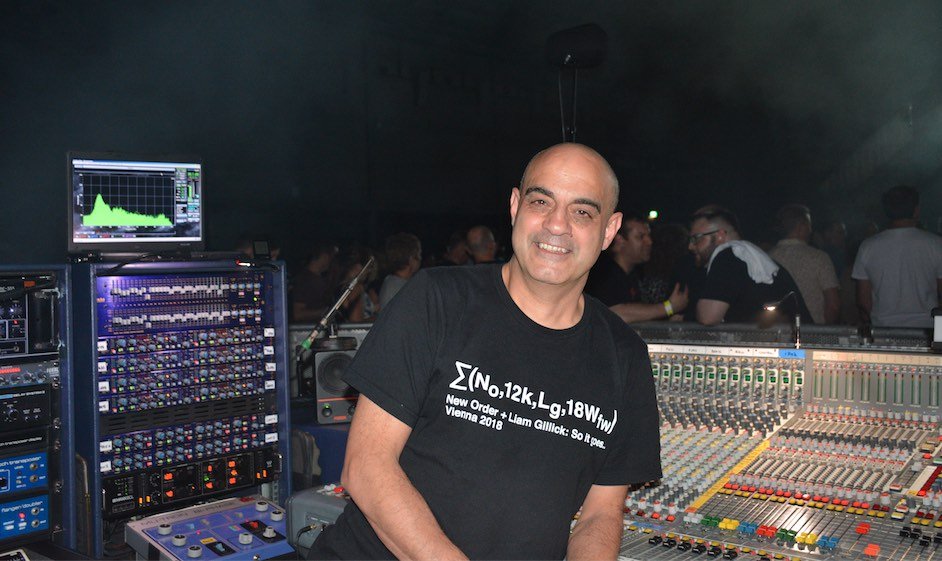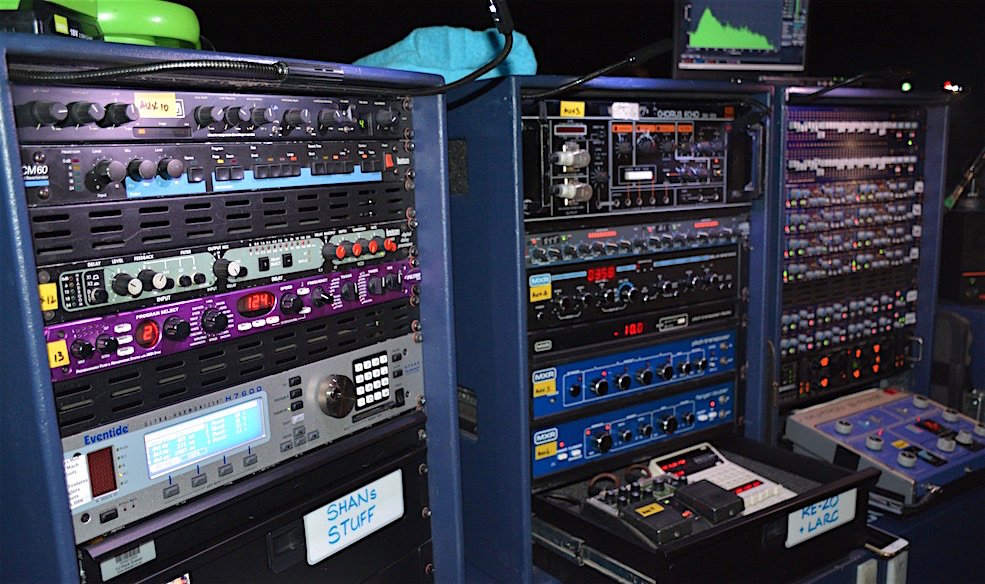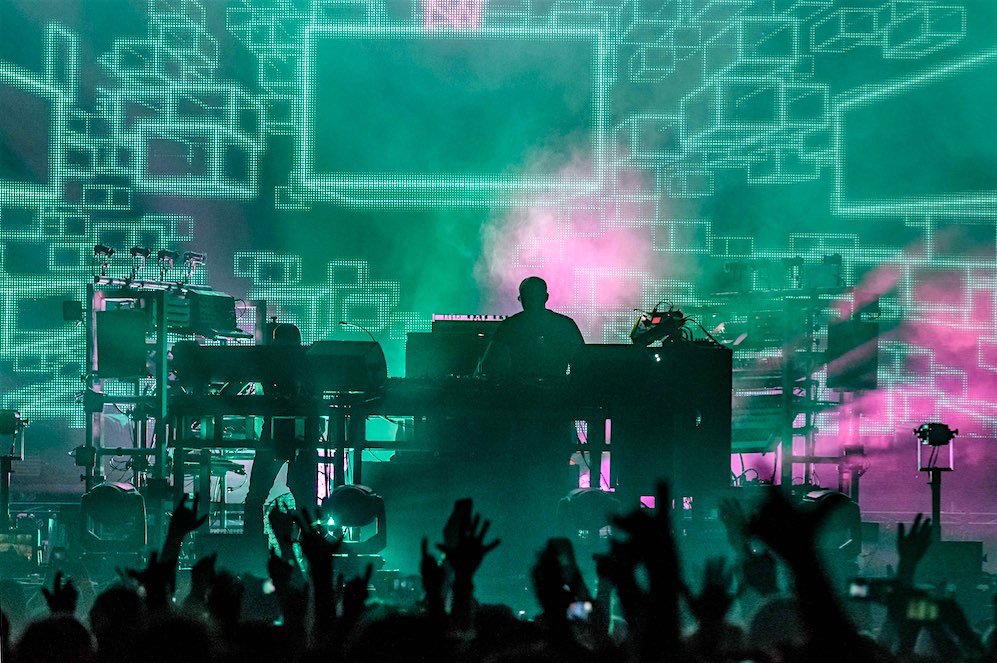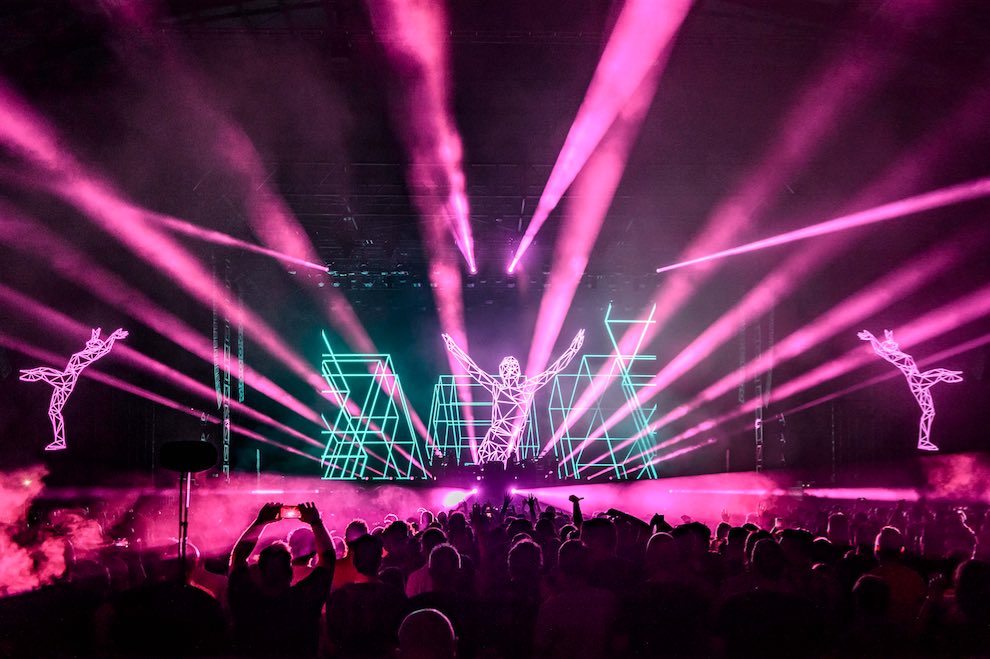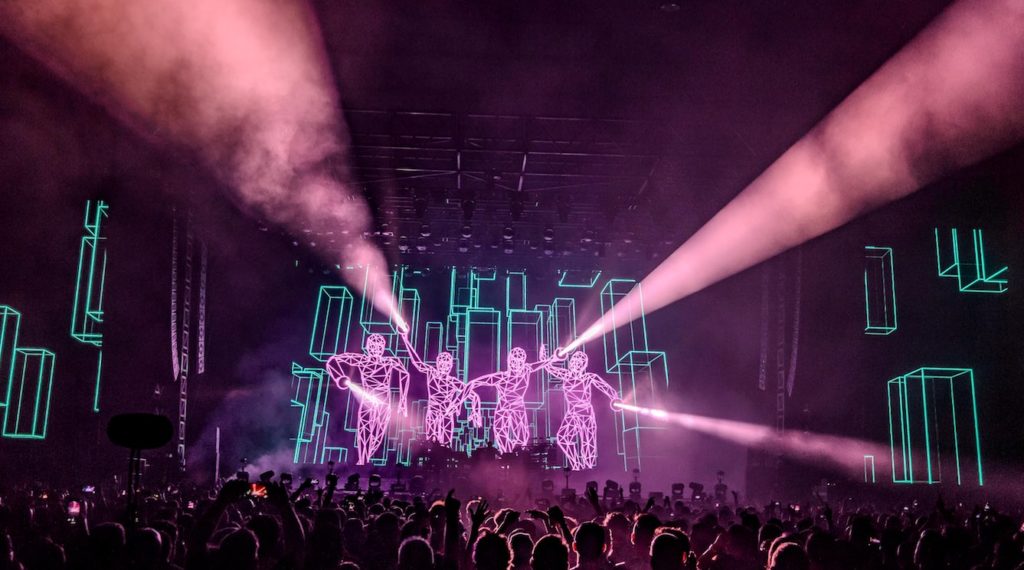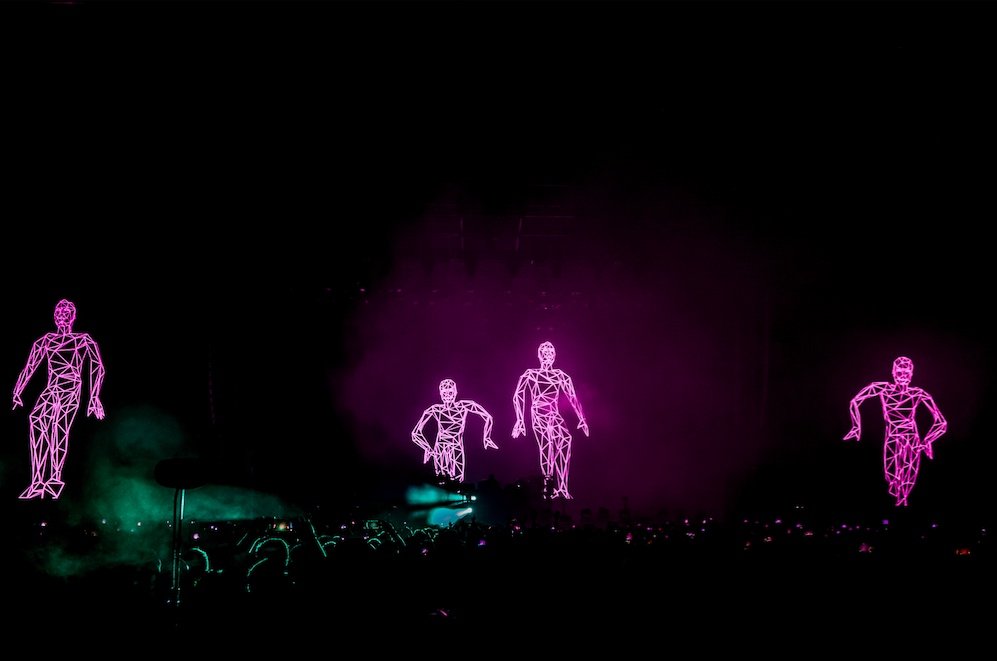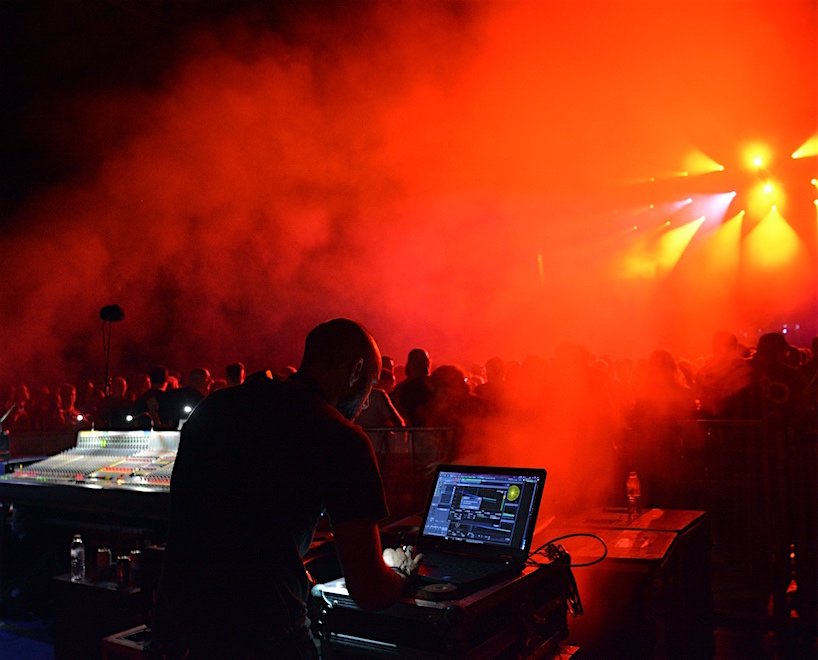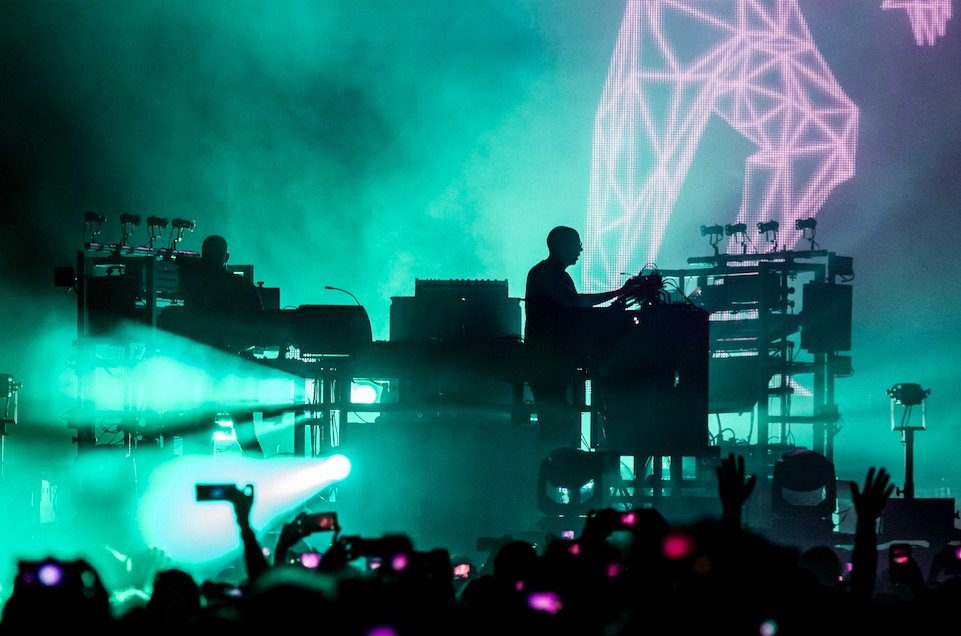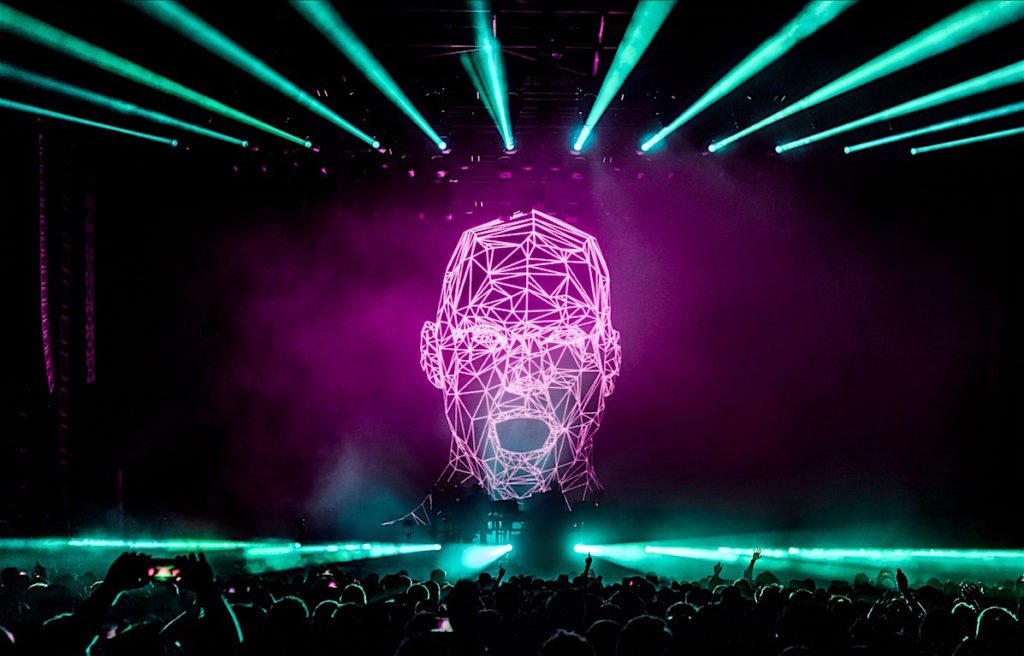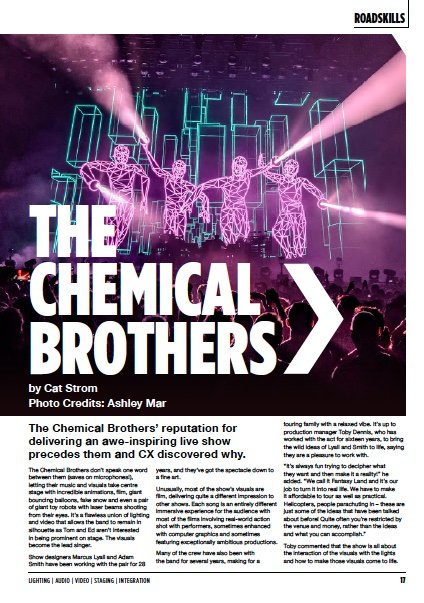News
13 Jan 2020
The Chemical Brothers
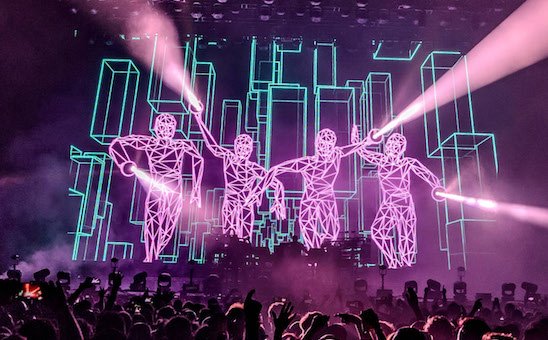
Subscribe to CX E-News
ROADSKILLS
The Chemical Brothers
The Chemical Brothers’ reputation for delivering an awe-inspiring live show precedes them and CX discovered why.
The Chemical Brothers don’t speak one word between them (saves on microphones!), letting their music and visuals take centre stage with incredible animations, film, giant bouncing balloons, fake snow and even a pair of giant toy robots with laser beams shooting from their eyes.
It’s a flawless union of lighting and video that allows the band to remain in silhouette as Tom and Ed aren’t interested in being prominent on stage. The visuals become the lead singer.
Show designers Marcus Lyall and Adam Smith have been working with the pair for 28 years, and they’ve got the spectacle down to a fine art.
Unusually, most of the show’s visuals are film, delivering quite a different impression to other shows. Each song is an entirely different immersive experience for the audience with most of the films involving real-world action shot with performers, sometimes enhanced with computer graphics and sometimes featuring exceptionally ambitious productions.
Many of the crew have also been with the band for several years, making for a touring family with a relaxed vibe. It’s up to production manager Toby Dennis, who has worked with the act for sixteen years, to bring the wild ideas of Lyall and Smith to life, saying they are a pleasure to work with.
“It’s always fun trying to decipher what they want and then make it a reality!” he added. “We call it Fantasy Land and it’s our job to turn it into real life. We have to make it affordable to tour as well as practical.
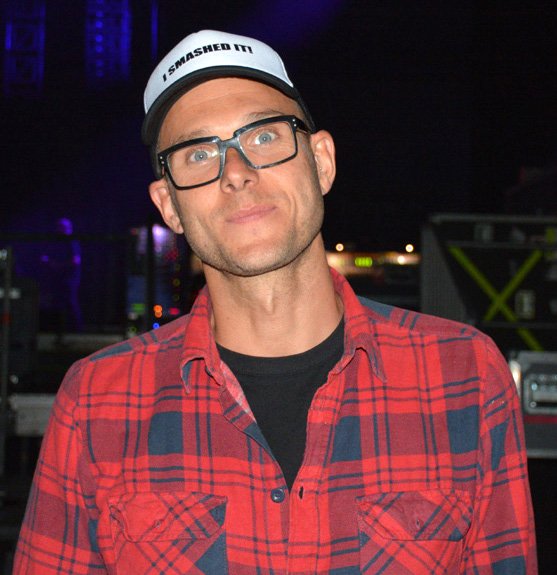
“Helicopters, people parachuting in – these are just some of the ideas that have been talked about before! Quite often you’re restricted by the venue and money, rather than the ideas and what you can accomplish.”
Toby commented that the show is all about the interaction of the visuals with the lights and how to make those visuals come to life.
“Everything has to be related and that’s something we’ve definitely developed and fine-tuned over the years. There has to be a meaning for it, nothing ever flashes or swoops for no reason. There’s thought behind every cut, every edit and every interaction.”
Toby says that his biggest challenge is squeezing it all in, especially as it’s an arena show which sometimes has to be squeezed onto a festival stage. “It’s not just put a load of lights up and stick a screen there. Everything has a relationship, so if you change just one thing there’s a ripple effect through the mapping, the stagecraft, and more,” he said.
“There’s definitely a level of predicting what’s to come and making sure we have a trick up our sleeve to be able to deal with that. It’s not a simple show to production manage!
“We’ve always prided ourselves on delivering all elements of the show, and over the sixteen years, I can’t think of one occasion where we’ve said we just won’t do something. We always find a way to deliver each element.”
At The Dome in Sydney, Toby said that the weight loads in the roof were a hindrance as it’s a heavy show with heaps of automation, resulting in lots of dynamic loads.
Toby’s solution was to add a stage to the venue, in this case a Clifton’s Apollo stage, which he describes as a fantastic stage that goes up quick, is black, has only four legs and you can pretty much hang what you want, where you want.
“It worked a treat and solved all of our problems,” Toby said. “We really are a big family who all really care and will go the extra mile to solve a problem. Nothing is too much to deliver the show for Tom and Ed.”
The massive 15.6m by 8.4m Roe Vanish 18 screen was sourced from Universal Pixels in the UK with Toby noting its’ amazing transparency.
“We were thinking of using the Roe MC18. The difference is the framework and the different IMs on the front whereas the Vanish disappears into nothing which is what we need in order to implement all of our mapping,” he added.
Behind the large LED screen upstage were five moving truss pods, each loaded with a Robe MegaPointe moving light and some LED battens. These were automated on ten Kinesys motors being run on a K2 controller.
The pods changed positions constantly throughout the set, so fans were aware of moving light sources as they flew up and down, with lights blasting through the screen. However, being masked by the screen, it wasn’t immediately apparent where they were in relation to the stage, adding another layer of optical depth and texturing to this multi-faceted picture.
“We’ve also developed our own app that creates a relationship between Kinesys, the real world, Catalyst and the grandMA, resulting in all three different softwares talking to each other,” remarked Toby.
“It means we can do some really fun stuff with mapping and physical movement of equipment. MA has their PosiStageNet that they use for tracking but we developed our own app which takes Kinesys feedback, PosiStageNet and also Catalyst, and allows us to create a 3D space that they all respond to.”
“The issue we had is that the automation system and the lighting control use different protocols, so we had to convert between the two,” concurred James Cooksey from Basic Monkey.

“The whole show is so integrated with all departments really tied together and not just through the time code system. We’re taking automation code and integrating it with video content and all the lighting positions.
“Rather than being set pan and tilt, they take feedback from the motors. As the lights move down, the pods move and the lights track their static position, which is pretty cool.”
For The Chemical Brothers, what goes on the screen is the most visually important factor in the show. The show design always begins with a large screen. The lighting design is then based on how the visuals can be enlarged.
“It’s not your usual light show, as the lighting is present to help the content and the videos,” explained Jean Christophe Aubrée, lighting operator on the tour.
“The lights interact through and around the screen, helping to give depth of field, and making the show more immersive.”
MPH supplied the lighting package for the tour including fifty Robe MegaPointes to create beams, wash and colours. Twelve MegaPointes each were positioned in lines along the upstage and downstage edges of the stage, with another twelve rigged on the downstage truss.
There were another ten behind the LED wall, rigged onto five moving pods together with some LED battens. “What I like most about the MegaPointe is its’ size,” said Jean Christophe.
“It’s a very compact fixture with so many features within. Normally that many features would result in a much bigger and heavier fixture. As we have twelve downstage on the floor a larger fixture would have looked ugly.
“They’re super quick – in movement and all the effects – and extremely easy to programme. The lens is very clear and sharp. For some songs we have lasers and MegaPointes on together and they match very well.
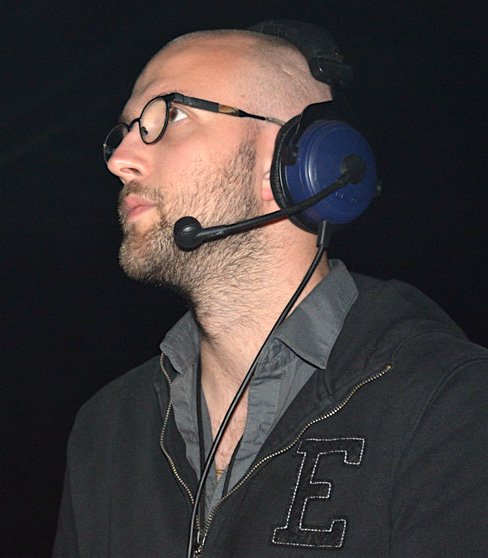
“The lasers have very saturated colours and we can do that with the MegaPointes too. They’re still very bright even with saturated colours, still very punchy alongside the lasers.”
Strobes are an integral part of Chemical Brothers’ shows and for this tour they created a wall of them. As well as having TMB Solaris Flares downstage and on the upstage, there was a strobe wall of nine by five Solaris Flares on custom wire ladders which went up on mid-stage kinesys 500kg liftkets.
The Flares delivered multi-coloured strobing at the level of intensity required, whilst their four-cell mode was used for different shapes and textures, giving endless visual options to play with.
MA Lighting grandMA3 consoles travelled over from the UK with the band, with two at FOH and two by dimmer city. The Kinesys tech is able to make sure everything is working well, as they can see the values coming in on the MA. It’s a fairly big network system with NPUs.
Jean Christophe describes his show file as very big but not complicated. However, there are many details, and the result is 7,000 cues!
It wouldn’t be a Chemical Brothers show without a dazzling laser display and the tour was serviced by ER Productions. With careful planning and perfectly executed cues, ER’s lasers created a stunning atmosphere using 18 Kinekts, (eight positioned along the downstage edge, eight upstage, and two located behind the screen on the Kinesys pods), one 30w Phaenon positioned centrally on a lifting column, a 24w Tripan centre stage, and four custom built Beambursts inside the eyes of the robots.
All were controlled by ER Productions’ senior laser technician, Tom Vallis, via Pangolin Beyond.
Sound engineer Shan Hira has been mixing The Chemical Brothers for 20 years and his FOH setup is unique, as it’s all analogue. Consequently the control package has to tour with them, as you wouldn’t easily be able to pick up this gear around the world.
“Its footprint and truck space are an issue, but The Chemical Brothers are particularly keen to ensure they have the best sound possible. It really is the best tool for the job, especially as they use a lot of analogue gear onstage.”
Shan had a rack full of dynamics and compressors including four Smart Research C2 stereo compressors and a multiband compressor. There’s also a Roland SRE-555 Chorus Echo to reproduce the smooth pre-digital echo and chorus sounds of the 1970s and ‘80s.
Added to that were an MXR analog delay, an MXR flanger, a Mutron Biphase phaser, a Lexicon 480 reverb, a Lexicon PCM 60 reverb, a Lexicon PCM 41 delay, and a Roland RE-201 Space Echo.
As the set can change from night to night, Shan says he is basically just tracking what Tom and Ed are doing, following their mix, and enhancing it.
“There are certain things that happen at the same point every night but really it’s about showing off what they’re doing to the best of my ability,” added Shan. “It’s an ever-morphing thing that changes every day, so it’s exciting to mix. It’s a big and loud show with plenty of bottom end and its quite sub-heavy.”
The PA was supplied by Eighth Day Sound who copied as closely as possible the PA the band will tour around Europe. “It’s the new d&b KSL system for main hangs, side hangs and delays,” commented Shan.
“ I love the sound of the Midas XL4 and it would always be my first choice, but none of the other acts I work with let me use it!”
“We also have some J-Subs in the air behind the main hangs plus some SL Subs and V-Fills across the front. I’ve used the GSL and the KSL and in my opinion they’re the best sounding boxes out there right now.
“The reason we fly the subs is that we needed to get a bit more punch out of the system and it works well. It’s what I’ll ask for every time now.”
According to Shan, the Dome provided a lot of slap off the back wall, but he managed to get the back doors opened which took some of the pressure off, adding that it sounds like quite a slow room and a bit murky around 100Hz.
The audio control package came from Skan whilst Lite Alternative supplied the touring lighting control package and a few custom pieces.
“MPH filled in the gaps and have done a great job,” concluded Toby. “Big Picture did the side screens and provided some techs, and they’re fantastic.”
CX Magazine – Dec 2019 Entertainment technology news and issues for Australia and New Zealand – in print and free online www.cxnetwork.com.au
© CX Media
Subscribe
Published monthly since 1991, our famous AV industry magazine is free for download or pay for print. Subscribers also receive CX News, our free weekly email with the latest industry news and jobs.

